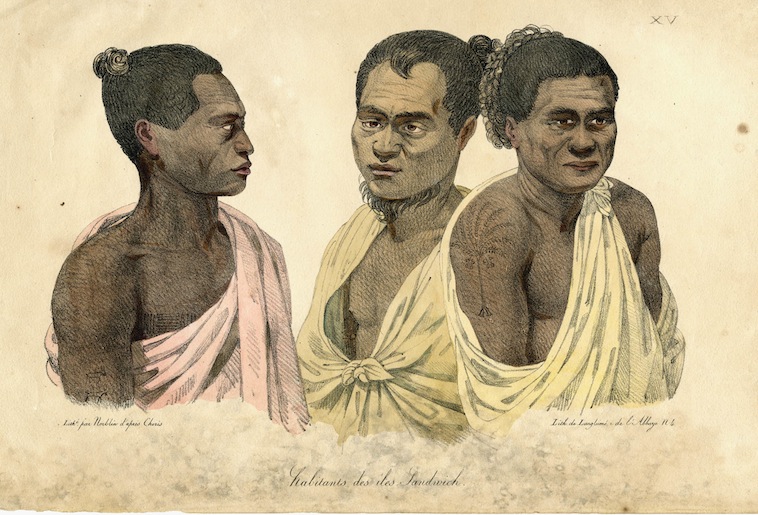Isaak Iselin in Hawaiʻi, 1807
 EuroAmerican sources on Hawaiʻi from 1778 onwards only account for one side of a contact situation. What would Iselin have learned if he could have seen Hawaiian perspectives?
EuroAmerican sources on Hawaiʻi from 1778 onwards only account for one side of a contact situation. What would Iselin have learned if he could have seen Hawaiian perspectives?
Choris, Louis. Voyage autour du monde, accompagné des descriptions par le baron Cuvier et A. de Chamisso; et d'observations sur les crânes humaines par le Docteur Gall. Paris: Didot, 1822, pl. 15.
Through Hawaiian Eyes I
As a Swiss merchant on an American trading vessel, Isaak Iselin reproduced in his journal a recognisably EuroAmerican view of Hawaiʻi and the people he met there. He enriched his personal experiences with tropes from a collective memory of Europeans in Hawaiʻi, fuelled for example by the travelogues of James Cook (1771ff.) and George Vancouver (1798). Such tropes were mostly centred on dualisms such as civilized/savage or moral/immoral. The fact that Iselin wrote comparatively more about Hawaiʻi than other ports of call can be read less as a reflection that Iselin heard or did much more during this part of his journey than as an indication of the importance of Hawaiʻi in the EuroAmerican collective imagination of the time. This discursive context needs to be considered carefully when using Iselin's account as an historical source.
In describing contact situations, Iselin's account tells just one side of the story. Hawaiian understandings of first contact were not recorded by Iselin, nor did he show much interest in them. This imbalance in no way renders Iselin's travelogue worthless, but the onesidedness of the account does demand that historians reconstruct some of narrative's perspectives and the tropes deployed therein.
The aim of this exercise is to examine the views that Isaak Iselin held on Hawaiian society, as well as looking at the patterns he used to justify his opinions. It is also about what Hawaiians saw – and Iselin did not – during contact.
